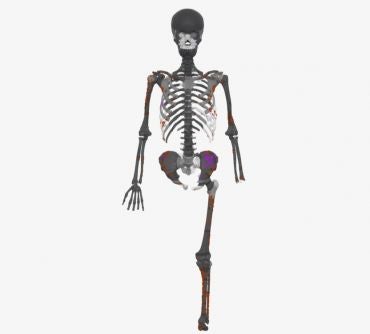Remains of 3,000-year-old shark victim found by scientists
Man living in Japan between 1370 and 1010 BC sustained 790 deep injuries during attack

Scientists have discovered the earliest known shark victim, a man who died more than 3,000 years ago in Japan.
Referred to as No 24 by researchers, he suffered at least 790 deep wounds after being attacked in the waters of the Seto Inland Sea at some point between 1370 and 1010 BC.
From the serrated injuries he sustained, it is thought that a tiger or a white shark killed him.
During the attack, the victim’s left hand was ripped off. His body was later recovered and he was buried in a cemetery at Tsukumo, a site which has been excavated.
Excavation records also show that he was missing his right leg.
J Alyssa White and Professor Rick Schulting, of Oxford University, came across his remains while researching signs of violent trauma in the skeletons of prehistoric hunter-gatherers which are kept by Kyoto University.
In a statement, the pair said: “We were initially flummoxed by what could have caused at least 790 deep, serrated injuries to this man.”
“The injuries were mainly confined to the arms, legs, and front of the chest and abdomen. Through a process of elimination, we ruled out human conflict and more commonly-reported animal predators or scavengers,” they added.
As shark attacks are rare in the archaeological record, they asked George Burgess, director emeritus of the Florida Program for Shark Research, to help them to identify the cause of No 24’s death.
With his support, they confirmed that the trauma shown on the victim’s skeleton was consistent with a shark attack.
Dr Mark Hudson, a co-author who works at the Max Planck Institute, said the researchers are unsure whether No 24 was looking for sharks at the time or whether its appearance came as a surprise.
“Either way, this find not only provides a new perspective on ancient Japan, but is also a rare example of archaeologists being able to reconstruct a dramatic episode in the life of a prehistoric community,” he said.
The research is published in the Journal of Archaeological Science: Reports.
Subscribe to Independent Premium to bookmark this article
Want to bookmark your favourite articles and stories to read or reference later? Start your Independent Premium subscription today.

Join our commenting forum
Join thought-provoking conversations, follow other Independent readers and see their replies